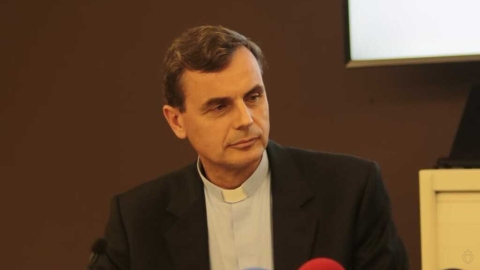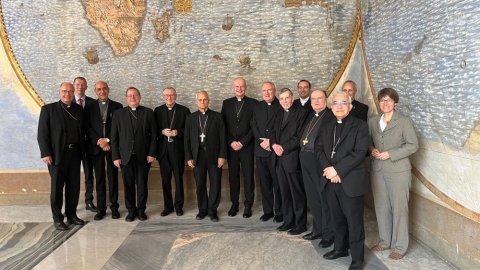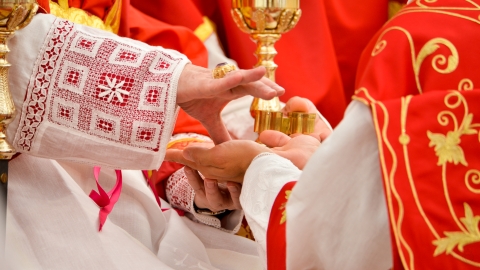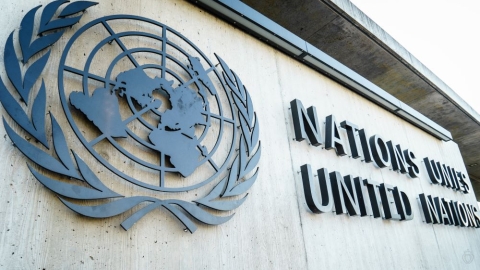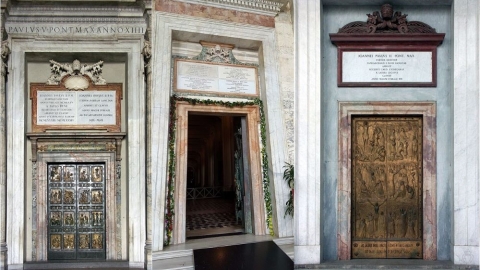Understanding Islam: The Koran

2000 years ago, Christianity made its humble entry into the world, and earned for its founder and apostles a violent death. For centuries, Christian blood would continue to flow that the earth might bear fruit. “The blood of the martyrs is the seed of Christians,” as Tertullian put it so well (Apology 50,13).
Nearly 1,400 years ago, Islam began to impose its bloody law, and for centuries now, blood has been flowing wherever it seeks to spread and in the countries it has conquered. The two religions are completely opposite, from the very beginning. The following article will do its best to present the Muslim law.
Sources of Muslim History and Law
The poverty of these sources is extreme, but it is covered up by Muslim historians, who are often the victims of this lack of sources, and by the servile repetition of Western historians. There are absolutely no documents that date back to the beginning of Islam. The earliest elements are from long after Mohammed’s time and were subjected to repeated manipulations. As for the life of the founder, there is nothing historic about it. The most recent studies all confirm this conclusion.
To know about the beginnings of Islam and the life of Mohammed, the Muslims use the Koran and tradition. Both of these sources are doubtful. Due to their belated origin; due also to the great difficulty in interpreting the Koran; and lastly, due to the lack of historicity in most of their tradition. The historian finds himself quite at a loss.
The Koran
Research on the origin of the Koran has already come to very interesting conclusions. Some of these elements are only hypotheses that have yet to be verified, but the general outline of the formation of the Koran seems fairly clear.
According to Islam, the Koran Is a Revealed Book
Koran (Quran) means “recitation” or “lectionary”. It is a text meant to be recited in religious ceremonies. Orthodox Muslims consider it to be uncreated, in the sense that it is an exact reproduction of the prototype of the divine religion preserved in Heaven from all eternity; but also meaning that, in its present form, its graphic and phonetic reproduction, its Arabian language, it is identical and co-eternal with the heavenly original.
It is considered to have been revealed, dictated, to Mohammed by the Archangel Gabriel, over the course of dozens of years, then repeated by him to his disciples who memorized the text. This, however, is only the first phase of the book’s constitution.
The Texts Were Confiscated
After Mohammed’s death, a caliph (Otman, 579-656, but there is some disagreement on this point) ordered all the elements of the text written on the shoulder blades of camels, stones or other materials, to be collected. The existing texts were burned, and their owners put to death. Another destruction campaign took place under the caliphate of Abu Bakr in 665 and yet another by ‘Abd al-Malik. In fact, today there remain practically no documents from before the 9th century. At last, according to Muslim tradition, a final phase of the Koran’s transcription was undertaken by ‘Abd al-Malik (685-705). He unified the spelling and made corrections to avoid certain all too obvious omissions and confusions. It was only in the 10th century that a single consonantal system was adopted, limiting the number of possible interpretations to 7.
The Night Journey
To confirm the sacralization of the Koran, the text itself uses a very original story that is worth recounting: “the night journey”. It goes like this: One night, Mohammed was divinely inspired to leave Mecca. God provided him with a guide, the Angel Gabriel, and a horse, Buraq. He traveled through the air to Jerusalem and landed on the temple mount. There he saw Abraham, Moses, Jesus and other prophets praying with him and behind him. Two chalices appeared, one full of wine, the other full of milk. Mohammed chose the one full of milk, and Gabriel approved. Then, with a powerful leap that left its mark on the Rock, Mohammed, with the help of the angels, rose towards the heavens. They opened, all the way to the seventh heaven, the closest one to God, who gave him the five prayers that Muslims would have to recite every day. He studied the “heavenly” Koran placed by God’s side, but “forgot” it before leaving. He descended and returned on his winged horse to Mecca where he announced the imminent arrival of a caravan over which he had flown on his way. The caravan did indeed arrive, proving the truth of his story of ascending and seeing God.
The fact he forgot the “heavenly” Koran was needed to explain two elements in the earthly Koran (the perfect copy of the heavenly Koran…); first of all, in order to show that “the Book” exists at God’s side; and secondly, to explain why it was dictated by Gabriel. It was the explanation the Caliphs came up with for these two elements. As for Mohammed’s ascension into heaven, it had to take place in Jerusalem, a “major” sacred place. Islam had to take root there and by this very fact take over the city. That is why the Koranic text had to connect Mohammed with the temple. The Al-Aqsa mosque (“the farthest”, as in the Koranic text) would be built 90 years later on the rock from which Mohammed ascended. The Islamic sacredness of Jerusalem was thus saved, and the Temple Mount became Islam’s second holiest site.
The Real Origin of the Koran
Fr. Théry was the first to present a theory that he developed in the works published under the pen name Hannah Zacharias. After his death, his disciple, Fr. Bertuel, continued his work. They discerned many Judaic elements in the doctrine exposed by the Koran and turned their research in that direction. Fr. Gallez studied the subject anew and came even closer to the solution: the basic elements of the Koran were a Judeo-Christian catechism from a very particular sect (the Judeo-Nazarians).
It was one of the many tendencies or sects born after the Gospel was preached, mixing hopes for Israel with the religion of Jesus Christ. They were described and often fought by the Fathers of the Church. It would seem that this sect persisted for a long time and ended up seeking an alliance with certain Arabs living in Syria in the hopes of fulfilling its religious and Messianic program. It was an internal study of the Koran that led to this conclusion, a conclusion now shared by many specialists on Islam.
The text used as a basis for elaborating the Koran was apparently a “Judeo-Nazarian” catechism, composed for the Arabs in order to convert them to the sect and enroll them in the mission for which it believed itself to be destined: that of rebuilding the temple of Jerusalem and introducing a “pure” cult in order to obtain the return of the Messiah and his 1000-year reign. This was the catechism Mohammed preached to those around him to draw his fellow citizens to this sect with which he had come into contact through his first wife.
Elements of Proof
The Koran’s plagiarisms and the elements it took from Jewish or Judeo-Christian traditions are legion. Many of Islam’s laws are taken from the Jewish religion and the Talmud. Certain passages or verses of the Koran come from the Targum Sheni (27.17-44)[1], the Testament of Abraham (87.19), the Targum of Jonathan ben Uziel and the Targum of Jerusalem (5.30-31), or the Midrash Rabba (21-51-71; 29.16-17; 37.97-98). All of these works are part of rabbinical literature.
What is more, 25% of the Koranic text is literally recopied from apocryphal books such as the Gospel of Pseudo-Matthew, the Gospel of James the Minor, the Gospel of Thomas, the Book About the Origin of the Blessed Mary and the Childhood of the Savior, the Book of Jubilees that contains the story of Satan’s lapidation (3.36) and Abraham’s rebukes to his father (19.41). These elements point to Judeo-Christian circles.
Going from the Judeo-Christian Tradition to Islam
After the death of Mohammed, his successors took Jerusalem according to the plan of the sect, but soon realized that these theories were fantasies. They decided to take things into their own hands, changing the Koran to create a new system. A vast undertaking, for it is not easy to change a book that is already public, or at least quite widespread. Especially since the various civil and religious authorities were each pulling in their own direction in an attempt to orient the text to suit themselves. Hence the unending corrections and confiscations, the destructions in order to control the text’s evolution.
But this approach could not last forever, and the text reached a more or less final form, with local variations and different tendencies (the Shiites and Sunnites, for example, the former accusing the latter of falsifying the Koran), around the 9th century, as explained above.
Final Evolutions
All of these manipulations at cross purposes caused many incoherencies in the Koran, which is indeed quite unclear. In order to do away with them, three decisions were taken at the turn of the 11th century and still apply today.
The dogma of the uncreated Koran, the heavenly Koran that Mohammed contemplated during his night journey.
The doctrine of the Abrogator and the Abrogated: the later a surah was revealed, the greater its value and more imperative its commands. In the case of a contradiction, the more recent surah supersedes the other. This led to a sifting out between the more violent “Medinan”[2] surahs and the far more peaceful “Meccan” surahs.[3]
The “gate of ijtihad” was closed, meaning there were to be no further attempts to reflect upon and interpret this religion. Any critical study of the Koran and the Muslim religion was forbidden.
There is also “tradition”. That which could no longer be accomplished by modifying a text was resolved by producing an explanation that carried on the evolution of the Koran.
Conclusion
From a historical point of view, the text has practically no value. Before understanding it more clearly, much work is needed to clarify it, if such is even possible. It is interesting, in fact, to draw a comparison with the Bible. For 150 years, the Bible underwent the repeated assault of naturalistic and historicist tendencies: objections were made, mockery and complaints rained down. But today, all the froth has disappeared, and the Sacred Book has stood up to all the criticism and remains victorious. What would remain of the Koran if put to this sort of test?
Sources: FSSPX.News – 3/21/2019
